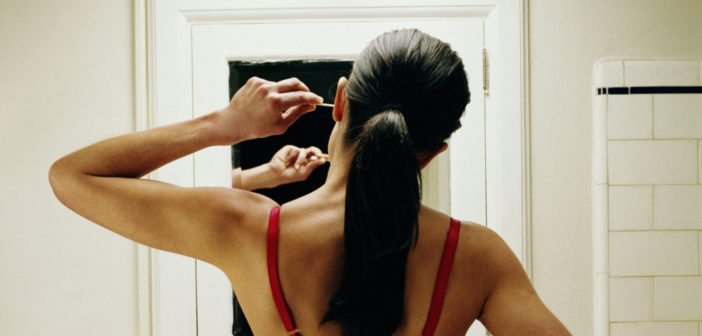It is something most of us are guilty of and we all feel darn good about it, rolling Q-tip around our ear canal. For many of us, it’s a daily ritual. A bad one at that!
The Q-tips package even warns, explicitly: “WARNING: DO NOT INSERT INTO EAR CANAL. ENTERING THE EAR CANAL COULD CAUSE INJURY.” Recently, the American Academy of Otolaryngology-Head and Neck Surgery Foundation, which represents the medical practice of treating disorders of the ear, nose and throat, reissued its perennial stern warning that you could be causing yourself a lot of trouble by rolling that little cotton swab in your ears. It’s time we gave — ahem, ear — to this advice.
The history of the Q-tip is fascinating. According to the Q-tips website, back in 1923 a Polish immigrant named Leo Gerstenzang was watching his wife take toothpicks and stick little pieces of cotton on them to clean her baby’s ears. The entrepreneurial Gerstenzang suddenly seized on the idea that people might actually pay for those, if you could mass-produce them.
Soon, he had started a company producing millions of “Baby Gays,” later renamed “Q-tips” (with the “Q” standing for “quality”). The sticks were made of wood until 1958, when the Q-tips company (eventually acquired by consumer-products giant Unilever) introduced rolled-paper sticks.
Anyway, doctors say the problem with using Q-tips in the ear is not just that you can damage your eardrum if you push too hard — although you can. It turns out that earwax is actually a good thing.
“There is an inclination for people to want to clean their ears because they believe earwax is an indication of uncleanliness,” noted Dr. Seth R. Schwartz, chairman of the American Academy of Otolaryngology-Head and Neck Surgery Foundation guideline update group that issued the advice last week. “This misinformation leads to unsafe ear health habits.”
Earwax (also known as cerumen) helps to fight infection and is produced continually by the body. It catches dirt, dust and other foreign substances. As we move our jaws and grow new skin in the ear canal, it’s gradually pushed out, where it eventually flakes off. Of course, that process is interrupted when we twirl the Q-tip inside the ear. Removing the wax dries out the ear canal, making it itch, and since there are a lot of nerve endings in there, it feels good to scratch.
But, Schwartz continues, when we push the Q-tip into the ear, it pushes the earwax deeper, creating a buildup around the eardrum. “Patients often think that they are preventing earwax from building up by cleaning out their ears with cotton swabs, paper clips, ear candles, or any number of unimaginable things that people put in their ears,” he said.
“The problem is that this effort to eliminate earwax is only creating further issues because the earwax is just getting pushed down and impacted further into the ear canal. Anything that fits in the ear could cause serious harm to the ear drum and canal with the potential for temporary or even permanent damage.”
It could also lead to pain, feeling of fullness in the ear, ringing in the ear (tinnitus), hearing loss, discharge, odor, cough and interference with hearing aids. The best way to handle earwax, doctors say, is just to leave it alone unless you have a buildup. And as your mom probably told you, don’t stick anything in your ear except your elbow. (Half of you just tried that, didn’t you?)
So, let’s recap: according to the experts, earwax is good; sticking a Q-tip deep inside the ear, bad. Still, upon hearing this news, many people will doubtless shrug their shoulders and continue their daily Q-tip sessions. But just so you know, there are some really cool ways to use Q-tips that don’t involve rolling them in your ears. Of course, many people use them to remove and apply makeup, but that’s only the tip of the iceberg.




